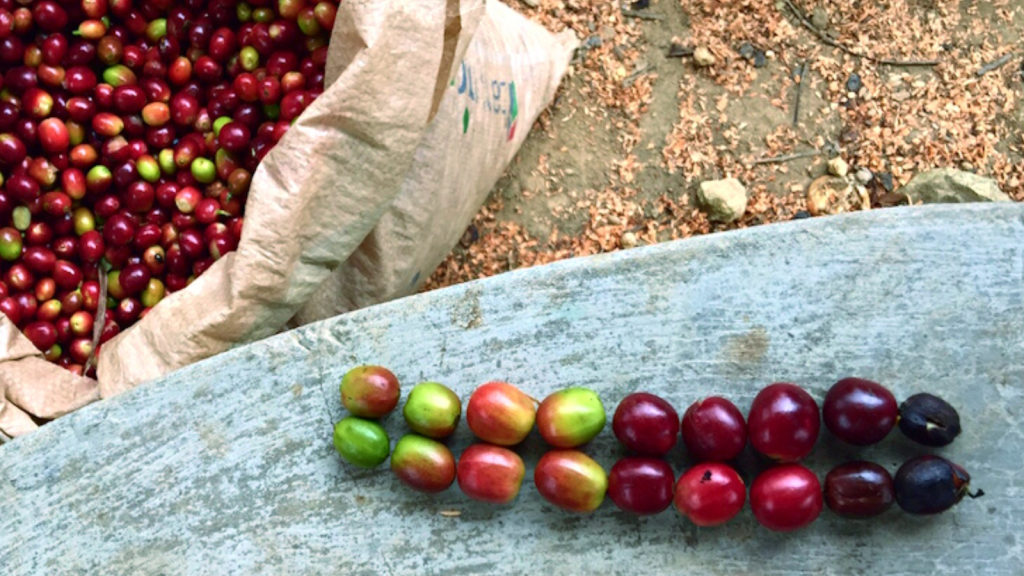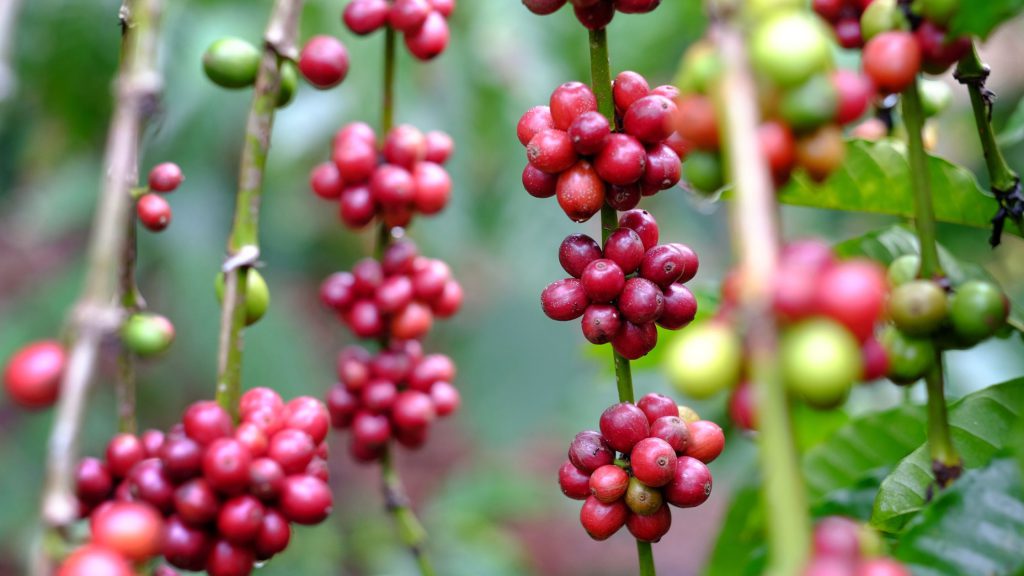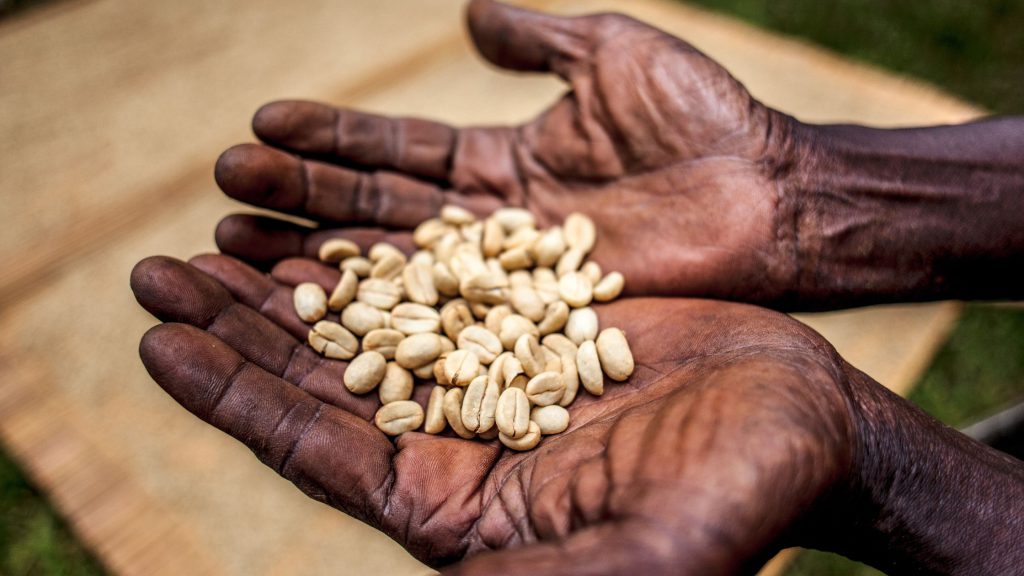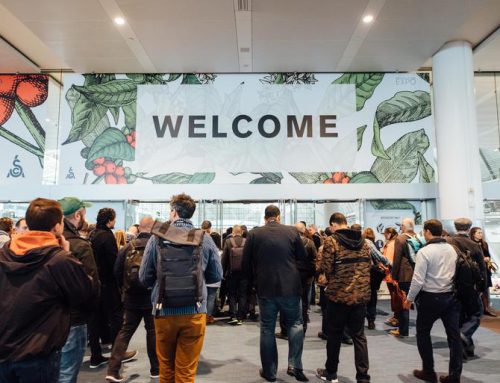
Arabica and robusta coffee beans by Igor Ushakov | Getty Images
Arabica vs Robusta, what’s the difference? How do they taste? While Arabica and Robusta coffee beans account for around 99% of the world’s coffee production and consumption, it doesn’t stop there. Both Arabica and Robusta are species of the Rubiaceae family under the Coffea genus. However, new species are still being discovered and there are other species out there that hold the promise of helping coffee survive climate change.
Each species of coffee has its own unique flavor profile and growing characteristics, much like how tomatoes, potatoes, and eggplants, all distinct species under the Solanum genus, possess a wide range of attributes.
Throughout the history of coffee cultivation, a few main species have dominated the world stage. However, as climate change poses an increasing risk to the global coffee supply, more resources are being dedicated to researching alternative species. The result is an increase in the emergence (or re-emergence) of uncommon and rare coffees that may hold the key to saving one of the world’s most popular beverages and hedging against the consequences of climate change. So, the battle will probably not end with Arabica vs Robusta.
What is a coffee bean?
Before we jump into different species, growing areas, and the future of coffee, let’s back up a bit. A coffee beans that get roasted are actually the seeds of the coffee cherry from a coffee plant. To get at the seed, we have to strip away the fruit and process it in preparation for roasting.

Arabica coffee cherries with varying degrees of ripeness
What are the main types of coffee beans?
Arabica Coffee Beans (Coffea arabica)
Around 60% of the world’s coffee volume is arabica coffee. The species is native to the fertile forests of Ethiopia, where it still grows wild today. Arabica coffee beans made their way to Yemen via traders in the 15th century and spread throughout Europe in the 16th century.
High demand prompted many European countries to try and cultivate their own coffee crops. However, the first to succeed was the Netherlands and the Dutch East India Company in the 17th century, when they began growing coffee in Indonesia. From there, arabica coffee proliferated around the world, and today, the species grows on every continent except Antarctica.
At the time of publishing this article, Genuine Origin’s entire catalog is comprised of scores of varieties of Arabica coffee beans. So, in the Arabica vs Robusta battle, the tasty Arabica coffee species is the hands down winner. However, we are eyeing several Robusta coffee beans in our effort to meet the diverse needs of coffee roasters.
Where does arabica coffee grow?
Despite their popularity, arabica coffee trees are challenging to cultivate. They grow at high altitudes and require a lot of rain and shade to thrive. Changes in climate patterns and rainy seasons can disrupt flowering and fruit maturation. Arabica coffee trees are also more susceptible to disease and pests than other species, although research institutes around the world are continuously developing new varietals that are stronger and more resilient.
Brazil is the world’s biggest producer of arabica coffee at over 41 million 60-kg bags per year. Colombia, the second largest, produces around 13 million bags.
What does arabica coffee taste like?
Arabica coffee flavor profiles vary widely based on origin, growing conditions, processing methods, and varietals. However, arabica coffee beans are generally favored over other species of coffee beans due to their lighter, sweeter, and more complex character. Additionally, because arabica grows at higher altitudes, coffee cherries mature at a slower rate, allowing them to accumulate more sugars and nutrients that translate to a fruity sweetness in the cup profile.
What are some common arabica coffee varietals?
Typica and Bourbon are the two most common arabica coffee varietals and often the parent plants from which subsequent varietals are based. Some mutations are naturally occurring, like Caturra, Java, and Mundo Novo, and some are developed in labs, like Pacamara and SL28/SL34. The Gesha varietal is also a highly prized coffee for its delicate flavor profile, which includes pronounced floral and fruity notes.

Robusta coffee cherries by Andris Hengki Picisa | Getty Images
Robusta Coffee Beans (Coffea canephora)
Robusta is the most well-known varietal of Coffea canephora and arrived on the scene around 100 years after arabica coffee, towards the end of the 19th century. Its origins lie in Central and Western Africa, and it makes up around 40% of the world’s coffee production volume today, a number that is increasing. Robusta’s name comes from the fact that it’s a more robust plant than arabica and can thrive in a broader range of environments.
Where does robusta coffee grow?
Robusta trees tolerate hotter climates and irregular rainfall, leading to growing environments at lower altitudes. Most of the world’s robusta coffee production comes from Vietnam with nearly 30 million bags per year, while Brazil produces around 22 million bags. Indonesia, Uganda, and India also have high production volumes of robusta coffee. This species is much easier and cheaper to cultivate than arabica, and trees also produce higher yields, making it an essential component of commercial coffee products like instant coffee and coffee blends.
What does robusta coffee taste like?
Robusta coffee beans have a higher caffeine content than arabica, a natural pest repellent that lends to its robustness as a plant. However, caffeine is a bitter substance and expresses an increased bitterness in coffee brewed from robusta beans. The flavor profile of robusta coffee often includes low acidity, earthy and spicy notes, and usually features a heavier body. Some specialty roasters include Robusta in their blends to give customers some extra caffeine. In the case of espresso, blending Robusta with Arabica tends to produce more crema than Arabica alone, not to mention the added caffeine kick!
What are some common arabica and robusta hybrid coffee varietals?
On the island of Timor in Southeast Asia, a spontaneous cross between arabica and robusta plants resulted in the Timor hybrid. Catimor, Colombia, and Castillo are some varietals that developed from the Timor hybrid and therefore feature both arabica and robusta genetics including increased pest and disease resistance.

Red, ripe coffees cherries harvested in Brazil
Liberica Coffee (Coffea liberica)
Arabica vs Robusta? Let’s bring in another contender. Although liberica coffee beans are not widely popular today, they play an important role in coffee’s history – and maybe its future. Like robusta, liberica is also native to Central and Western Africa but was first commercially cultivated in the Philippines in the 18th century. During the coffee rust pandemic that decimated arabica plantations in the late 19th century, liberica production ramped up to around 20% of the global coffee supply. Today, that number is less than 2%.
Where does liberica coffee grow?
Liberica still grows in small quantities in the Philippines, where it’s known locally as kapeng barako, Malaysia, and Indonesia. Like robusta, liberica is also tolerant of lower altitudes and higher temperatures, although it thrives best in light shade and well-drained soils. Liberica trees grow much taller than arabica and robusta trees and bear fruits with larger and irregularly shaped seeds.
What does liberica coffee taste like?
Despite its hardiness as a plant, a major disadvantage to liberica is its flavor profile. It can only be described as inconsistent, potentially due to low production volumes, and flavors can vary from fruity and floral to smoky and woody.

Coffee farmer hands holding unroasted Arabica coffee beans
Excelsa Coffee
Excelsa was once considered its own coffee species but was recently reclassified as a variety of liberica due to similarities in growing characteristics. It was first discovered in 1903 in Central Africa, where it was known as Coffea diwevrei.
Where does excelsa coffee grow?
Today, excelsa mainly grows in small quantities in Vietnam, the Philippines, India, and Uganda. It thrives in altitudes from 1,000 to 1,300masl and can grow over 15 meters tall. As a result, Excelsa trees are highly productive, and their size can be a challenge for farmers to prune constantly. It also has a lower caffeine content than arabica and robusta coffee but remains disease and pest resistant to most afflictions.
What does excelsa coffee taste like?
Despite its reclassification under liberica, excelsa still retains much of its own distinctiveness – notably in cup profile – that comes with much more fruitiness, complexity, and tart acidity than liberica coffee. Excelsa coffee beans are less soluble and thus require different processing, roasting, and brewing techniques than what is currently used for arabica and robusta coffee beans.
What are some uncommon types of coffee beans?
Liberica and excelsa may already be considered rare in the commercial coffee world, but some emerging species take scarcity to the next level, despite their prominence on the world stages of professional coffee competitions. Enter the wild cards in Arabica vs Robusta.
Eugenioides (Coffea eugenioides)
The spotlight focused on eugenioides during the 2021 World Barista Championship and World Brewers Cup as a number of finalists introduced this revived coffee species to the audience. It may be native to East Africa, but cultivation was largely abandoned until researchers at Finca Inmaculada in Colombia rescued the species and applied experimental processing methods on the rare coffee beans. The genetic parentage of Arabica coffee stems from a hybrid between Coffea eugenioides and Coffea canephora, making eugenioides a key coffee species that deserves a closer look.
Where does eugenioides coffee grow?
Eugenioides plants are more delicate than arabica trees and produce less volume, making them a risky investment for most producers. That’s why primary production is still limited to Finca Inmaculada in Colombia.
What does eugenioides coffee taste like?
As a coffee species that’s also low in caffeine, eugenioides coffee cup profiles usually feature almost no bitterness. What makes eugenioides coffee special and stand out on the cupping table, however, is its distinct sweetness that almost resembles sweeteners and accompanying unusual flavor notes like lemon drops and cereal milk.
Racemosa Coffee (Coffea racemosa)
Racemosa is one of the rarest coffee species in the world. It is native to South Africa and Zimbabwe and was once widely cultivated in Mozambique in the 20th century. It’s also naturally low in caffeine, only around half the amount found in arabica coffee. Racemosa coffee cherries are dark purple, almost black, when ripe, and the coffee beans are tiny, about one-third the size of your average arabica coffee bean.
Where does racemosa coffee grow?
Racemosa coffee only grows a few plantations in Mozambique now – on Ibo Island and Kwa-Zulu Natal in Port Edward – and in select farms in South Africa. Its low yield and labor intensity also contribute to racemosa’s rarity. However, work is being done in Kwa-Zulu Natal to reignite the racemosa industry and help it realize its potential as a commodity export and natural low-caf coffee alternative. Racemosa requires hotter temperatures and drier conditions than arabica (it can survive up to nine months without water!), but it’s still a challenge to scale this species into sustainable production levels.
What does racemosa coffee taste like?
Although it’s difficult to generalize what racemosa coffee tastes like due to low volumes, researchers have described it as having lots of spice notes, such as clove and licorice, with a distinctly earthy tone. Aramosa, a developing hybrid of arabica and racemosa undergoing research at the Agronomic Institute of Campinas (IAC) in Brazil, has received positive feedback on the competition stage for inheriting racemosa’s low caffeine content and arabica’s ideal flavors, resulting in a unique bubblegum-like flavor profile.
Stenophylla Coffee (Coffea stenophylla)
Stenophylla, also known as Sierra Leone coffee, is yet another emerging coffee species native to West Africa, first discovered in the 18th century. Dr. Aaron Davis, head of coffee research at the Royal Botanic Gardens, Kew, has spent the last few years trying to coax the species back into a cultivation cycle from a minute supply of seeds found in Sierra Leone.
Where does Stenophylla coffee grow?
Stenophylla coffee is endemic to Guinea, Sierra Leone, and the Ivory Coast and can grow between 200 and 700masl, with fruits that turn black when ripe. Part of Davis’s work includes encouraging and incentivizing farmers to identify more stenophylla trees in the wild to supplement the available population of trees.
What does Stenophylla coffee taste like?
Initial modern sensory analysis on stenophylla coffee yielded results that are remarkably similar to arabica cup profiles and suggests the commercial viability of this new species as an arabica alternative. In an early evaluation in 2020, a cupping panel in London awarded the small sample of stenophylla coffee a specialty score of 80.25. Another evaluation revealed a flavor profile that included tasting notes of peach, blackcurrant, jasmine, elderflower syrup, and other characteristics often attributed to high-quality arabica coffee. Could Stenophylla be the next contestant in Arabica vs Robusta?
Arabica, Robusta and Coffee species and climate change?
There are many different types of coffee beans, but only a very small minority are recognized and enjoyed by the world’s coffee drinkers. For now, its Arabica vs Robusta. However, it’s important to keep the lesser-known species in mind as the coffee industry and how a changing climate develops.
What these rare coffee species (liberica, eugenioides, racemosa, and stenophylla) have in common is their potential to diversify the genetic portfolio of coffee. This is necessary as climate change makes growing high-altitude arabica coffee more and more difficult.
We can wait for someone to discover the unicorn coffee species. It would be delicious, highly-caffeinated, pest and fungus resistant and the plants would love the heat. However, a better bet would be to continue to investigate existing alternative coffee species, and potential hybrids. Experimentation could result in new varietals that are better positioned to handle low elevations, higher temperatures, stronger disease resistance, and drought tolerance while maintaining the delicious coffee flavor profiles we’ve come to covet today.






